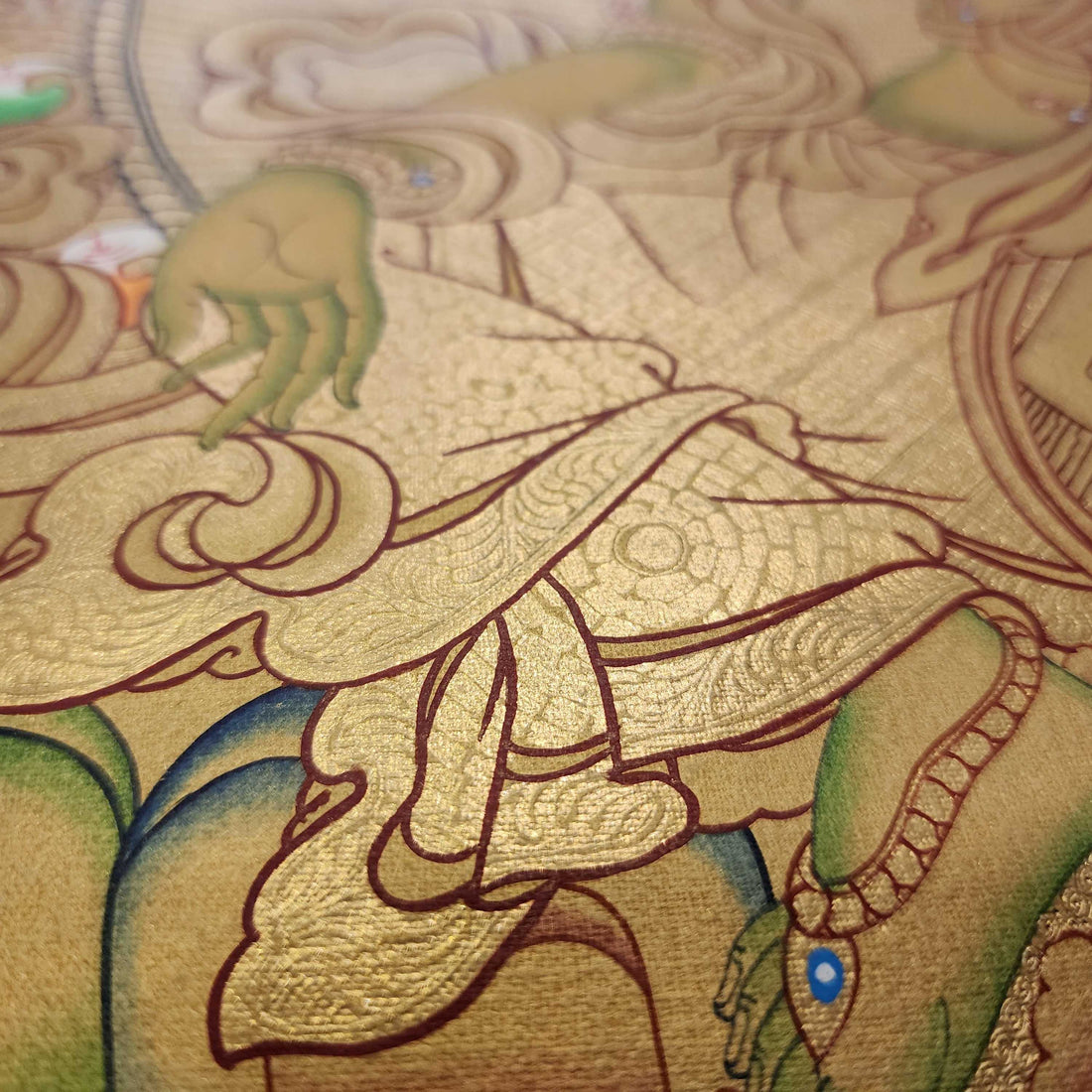
The Symbolism of the Endless Knot in Thangka Art
Share
Introduction
The Endless Knot, also called the Shrivatsa, is one of the Eight Auspicious Symbols in Buddhism. In Thangka art, it represents the interconnection of wisdom, compassion, and the eternal cycle of life.
Meaning of the Endless Knot
— Symbolizes infinite wisdom and compassion intertwined.
— Represents the unity of all phenomena. Cause and effect, method and wisdom, samsara and nirvana.
Design and Structure
— The knot has no beginning or end, symbolizing eternity.
— Its looping pattern reflects harmony, balance, and the interconnectedness of all things.
Placement in Thangka Art
— Often shown alongside the other Eight Auspicious Symbols.
— Sometimes placed at the feet of Buddhas or deities, symbolizing the eternal truth of Dharma.
Spiritual Symbolism
— Encourages practitioners to recognize interdependence in all aspects of life.
— Reminds us that wisdom and compassion must work together to achieve enlightenment.
Cultural and Ritual Use
— The Endless Knot is also found in Tibetan jewelry, textiles, and temple decorations.
— It symbolizes auspiciousness, longevity, and harmony in both spiritual and worldly life.
Conclusion
In Thangka art, the Endless Knot serves as a timeless reminder of interconnectedness. It reflects the eternal truth of Dharma, inspiring practitioners to live with balance, compassion, and wisdom.
